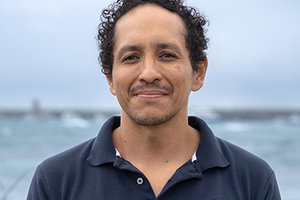The Galapagos Islands are known globally for their great biodiversity, their high levels of endemism and the role they played in helping Charles Darwin to formulate his theory on evolution by natural selection. Its unique fauna, flora and landscapes are of interest to thousands of national and international visitors, who come to learn about and experience the wonder of being in this, the first Natural Heritage of Humanity, declared by UNESCO in 1979.

Numerous studies have been carried out to discover and describe the natural systems of Galapagos, over at least six decades of continuous work in various lines of research. These studies have greatly expanded our understanding of the archipelago's unique natural systems, which has been possible thanks to the development of at least 100 studies per year. About half of these studies have been focused on the natural sciences:
The first four fields of study—Taxonomy and Bio-geography, Evolutionary Ecology, Conservation Biology, and Natural History—have been devoted to understanding the Island's high level of biodiversity. However, Geology is the science that studies geological formations, geographic isolation and landscape characteristics, occupies only fifth place. Features or peculiarities that draw the attention of national and international scientists. The natural space of Galapagos has offered the unbeatable opportunity to describe and appreciate the volcanic activity, processes of the earth's crust, and dynamics in depths of its mantle—thus allowing for further development and research on these topics. Especially the book by Harpp et. to 2014 where several studies are compiled that describe the particularities of the composition of the magma under the Galapagos shelf, its interaction with oceanic formations, and how this forms the crust that supports life on the islands.

According to research on geology and volcanism, the terrestrial portion of our planet is approximately 300 million years old (Ma), while studies carried out in the Galapagos Islands consider that the archipelago is geologically younger, since they have a recent history of 20 Ma (Harpp, s.f, 2014). How did this happen? In the Atlas of Galapagos, Ecuador: Native and Invasive Species. Quito, FCD and WWF-Ecuador” (FCD, WWF et al., 2018) it is mentioned that the movement of the Nazca plate in an easterly direction and the subduction process that it has under the lateral plate (Cocos), generates a leak of magma from the mantle of the earth in a column in a vertical direction (mantle pen). Through this plume material emerges that generates the Galapagos platform, with a thickness of 3km, on which the chain of islands and seamounts that make up the oceanic volcanic islands of Galapagos is formed (Figure 2).

Within the series of publications 'Storymaps', carried out by the Charles Darwin Foundation, reference has been made to this topic, presenting the “From volcanoes to oceanic islands” . In this storymap we tell how, 20 Ma ago, the explosive origin of the Galapagos platform occurred, and how, thanks to this process, the Galapagos Islands were formed. It includes a brief description of the geological origin and details about the hotspot theory, and how, according to this point of emergence of material from the Earth's mantle, the islands were re-classified according to their ages and formation material. Additionally, a brief description of the geological origin of the islands, included in the Galapagos Atlas, whose second edition is in preparation, in its English version, with updates and news. Here you can click to learn more about some geology maps of the Galapagos Islands.
References
Charles Darwin Foundation (CDF) and WWF-Ecuador. (2018). Galapagos Atlas, Ecuador: Native and Invasive Species. Quito, CDF and WWF-Ecuador.
Harpp, KS, Mittelstaedt, E., d'Ozouville, N., & Graham, DW (Eds.). (2014). The Galápagos: A natural laboratory for the Earth sciences (Vol. 204). John Wiley & Sons.
Harpp, KS, & Geist, DJ (2018). The Evolution of Galapagos Volcanoes: An Alternative Perspective. Frontiers in Earth Science, 6. https://doi.org/10.3389/feart.2018.0005.
Tapia, W., Ospina, P., Quiroga, D., González Novoa, JA, & Montes del Olmo, C. (2009). Science for sustainability in Galapagos: The role of scientific and technological research in the past, present and future of the archipelago. https://repositorio.uam.es/handle/10486/3187






